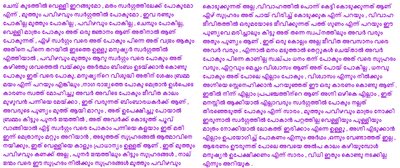
The oldest dated to about 900 BCE, while the youngest Brahmanas (such as the Shatapatha Brahmana), were complete by about 700 BCE. Each of the Brahmanas is associated with one of the Samhitas or its recensions. The Brahmanas are prose texts that comment and explain the solemn rituals as well as expound on their meaning and many connected themes.The Samhitas contain invocations to deities like Indra and Agni, "to secure their benediction for success in battles or for welfare of the clan." The complete corpus of Vedic mantras as collected in Bloomfield's Vedic Concordance (1907) consists of some 89,000 padas ( metrical feet), of which 72,000 occur in the four Samhitas. This is the oldest layer of Vedic texts, which were composed between circa 1500–1200 BCE (Rig Veda book 2–9), and 1200–900 BCE for the other Samhitas.


In some contexts, the term Veda is used to refer only to these Samhitas, the collection of mantras. There are four "Vedic" Samhitas: the Rig-Veda, Yajur-Veda, Sama-Veda and Atharva-Veda, most of which are available in several recensions ( śākhā).
The Samhitas (Sanskrit saṃhitā, "collection"), are collections of metric texts (" mantras"). The corpus of Vedic Sanskrit texts includes: Any text considered as "connected to the Vedas" or a "corollary of the Vedas". Texts composed in Vedic Sanskrit during the Vedic period ( Iron Age India). The term "Vedic texts" is used in two distinct meanings: Rigveda manuscript in Devanagari Vedic Sanskrit corpus Such writings include the Divya Prabandham (aka Tiruvaymoli). the Iyengar communities), the word veda is used in the Tamil writings of the Alvar saints. But the Tamil Naan Marai mentioned in Tholkappiam is not Sanskrit Vedas. Marai literally means "hidden, a secret, mystery". Vedas are called Maṛai or Vaymoli in parts of South India. The term in some contexts, such as hymn 10.93.11 of the Rigveda, means "obtaining or finding wealth, property", while in some others it means "a bunch of grass together" as in a broom or for ritual fire. The Sanskrit term veda as a common noun means "knowledge". Root cognates are Greek ἰδέα, English wit, etc., Latin videō "I see", German wissen "to know" etc. This is not to be confused with the homonymous 1st and 3rd person singular perfect tense véda, cognate to Greek (ϝ)οἶδα (w)oida "I know". The noun is from Proto-Indo-European *u̯eidos, cognate to Greek (ϝ)εἶδος "aspect", "form". This is reconstructed as being derived from the Proto-Indo-European root *u̯eid-, meaning "see" or "know." The Sanskrit word véda "knowledge, wisdom" is derived from the root vid- "to know". 3 Chronology, transmission, and interpretation. Other śramaṇa traditions, such as Charvaka, Ajivika, Buddhism, and Jainism, which did not regard the Vedas as authorities, are referred to as "heterodox" or "non-orthodox" ( nāstika) schools. The various Indian philosophies and Hindu denominations have taken differing positions on the Vedas schools of Indian philosophy which acknowledge the primal authority of the Vedas are classified as "orthodox" ( āstika). By reciting them the cosmos is regenerated, "by enlivening and nourishing the forms of creation at their base." The mantras, the oldest part of the Vedas, are recited in the modern age for their phonology rather than the semantics, and are considered to be "primordial rhythms of creation", preceding the forms to which they refer. The Vedas have been orally transmitted since the 2nd millennium BCE with the help of elaborate mnemonic techniques. Hindus consider the Vedas to be apauruṣeya, which means "not of a man, superhuman" and "impersonal, authorless," revelations of sacred sounds and texts heard by ancient sages after intense meditation. Vedas are śruti ("what is heard"), distinguishing them from other religious texts, which are called smṛti ("what is remembered"). The texts of the Upanishads discuss ideas akin to the heterodox sramana-traditions. Some scholars add a fifth category – the Upasanas (worship). 
Each Veda has four subdivisions – the Samhitas ( mantras and benedictions), the Aranyakas (text on rituals, ceremonies, sacrifices and symbolic-sacrifices), the Brahmanas (commentaries on rituals, ceremonies and sacrifices), and the Upanishads (texts discussing meditation, philosophy and spiritual knowledge). There are four Vedas: the Rigveda, the Yajurveda, the Samaveda and the Atharvaveda.

Composed in Vedic Sanskrit, the texts constitute the oldest layer of Sanskrit literature and the oldest scriptures of Hinduism. The Vedas ( / ˈ v eɪ d ə z/, IAST: veda, Sanskrit: वेदः, lit.'knowledge') are a large body of religious texts originating in ancient India. The Vedas are ancient Sanskrit texts of Hinduism.








 0 kommentar(er)
0 kommentar(er)
